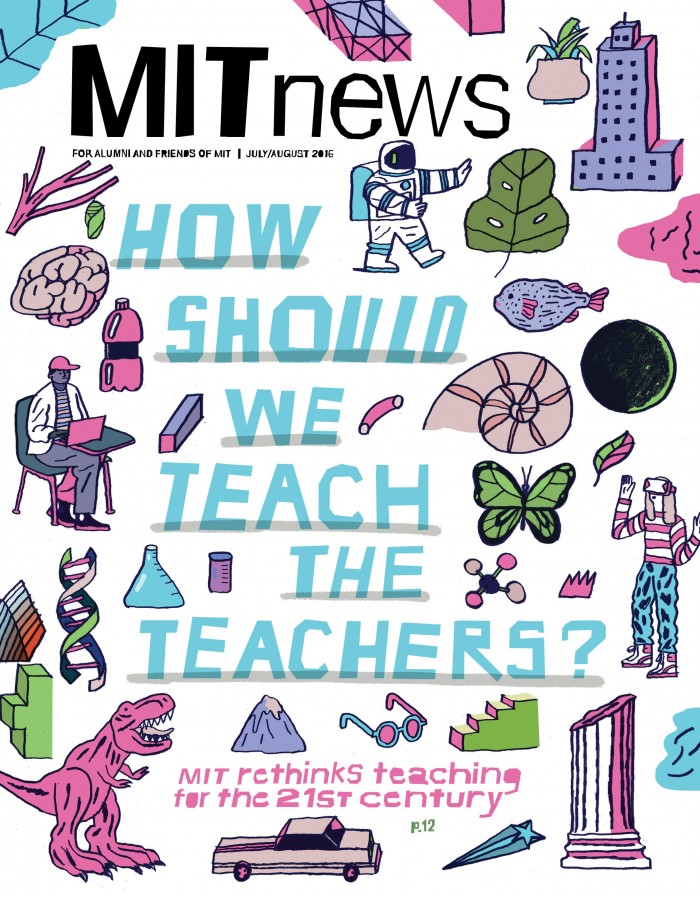Letters
MIT App Inventor’s Impact
MIT app inventor democratizes the power of mobile-app development (“Making It Easy to Make Apps,” July/August 2016). I have seen it firsthand by teaching computer science in a public high school and by coaching teams in the Technovation Challenge. By embodying the “low floor, high ceiling” philosophy, MIT App Inventor makes it easy to get started so most everyone can create their first mobile app in less than an hour. Because of that, programs like the Technovation Challenge and the new Advanced Placement Computer Science Principles course are opening up computing to groups that have been woefully underserved by computer science education in the past.

This is important because computer science teachers consider themselves successful recruiters if their male to female ratios are 2 to 1. The National Center for Women in IT notes that one-sixth of undergraduate computing degrees go to women. In 10 states, fewer than 10 girls took the 2015 AP Computer Science Java exam; nine states had no African-Americans and five had no Latinos taking it. Not surprisingly, the ratios in academia and industry reflect this.
Educators disagree on the best ways to recruit students from traditionally underserved groups, but no one disagrees with the fundamental necessity for equity in computer science education.
MIT App Inventor allows extracurricular programs and in-school courses (from introductory to AP) to move away from a narrow focus on programming, and helps students transition from users to makers of mobile apps.
David C. Petty ’86
Winchester High School
Winchester, Massachusetts
It’s great to see the work of Hal Abelson and the App Inventor team highlighted in MIT Technology Review and to hear stories from around the world. App Inventor is also empowering high school students less than a mile from MIT.
I teach computer science at a Central Square charter school serving youth from Somerville, Cambridge, Everett, and other surrounding towns. Approximately 66 percent of our students qualify for free or reduced-price lunch, and the majority are from racial backgrounds typically underrepresented in computer science.
For the last two years I have been using App Inventor in my ninth-grade Introduction to Computer Science class. Students in this class have typically not done any programming, not even Scratch. I personally invite and encourage students—especially girls—to join the class. Many of them start with trepidation and can easily get discouraged, listening to the message from society that programming is not for them.
App Inventor gives students immediate successes. We start with Talk to Me, and the class is filled with voices—human and synthesized—and laughter. We use a series of tutorials to build apps that can be easily replicated and then customized to let students express their creativity and follow their interests. Success is easy, and seeing the apps they build on a phone in their hands makes the work more concrete. By the end of the semester, students create their own apps and put them up on the Google Play Store.
With App Inventor, my students’ relationship with technology is fundamentally changed. No longer are they just consumers but authentic, published creators
of apps.
Caroline Meeks ’85
Cambridge, Massachusetts
GE’s Early Computer Chip
Every so often, publicity about the need to supercool supercomputers engenders a note about the cryotron, a device that needed to be really cold. Christina Couch’s “The Tiny Switch That Almost Made It Big” (July/August 2016) is one such note, and it reminded me of our early work at GE on integrated circuits.
In the late ’50s, semiconductor logic switches for computers were made by the hundreds at once on a wafer. They had to be cut apart and tested; yields were low. Many people envisioned connecting them into a complex circuit without separating them from the wafer. But semiconductors were then essentially 3-D devices needing carefully controlled crystalline structures.
At GE’s research lab in Schenectady we took Dudley Allen Buck’s wire-wound cryotrons and made essentially 2-D devices of thin films of tin and lead—amorphous materials needing only modest purity. I took that work to GE’s computer lab in what is now Silicon Valley. And it worked; we could make hundreds of devices on a single “chip,” with acceptable yields. By 1962 we had made a working computer—perhaps the first “integrated circuit” computer. Much of this work was published, and the Computer History Museum in Mountain View has some “chips.”
After hearing Jean Hoerni describe his planar silicon transistor—essentially a 2-D device like ours—at a conference, I could see that we would be outrun by the many semiconductor firms that would pick up his work. It was great fun while it lasted, but we closed up shop and went on to other, warmer things.
John Bremer ’54, SM ’55
Fernandina Beach, Florida
Tell us what you think
E-mail mitnews@technologyreview.com
Write MIT News, One Main Street, 13th Floor, Cambridge, MA, 02142
Keep Reading
Most Popular
Large language models can do jaw-dropping things. But nobody knows exactly why.
And that's a problem. Figuring it out is one of the biggest scientific puzzles of our time and a crucial step towards controlling more powerful future models.
The problem with plug-in hybrids? Their drivers.
Plug-in hybrids are often sold as a transition to EVs, but new data from Europe shows we’re still underestimating the emissions they produce.
How scientists traced a mysterious covid case back to six toilets
When wastewater surveillance turns into a hunt for a single infected individual, the ethics get tricky.
Google DeepMind’s new generative model makes Super Mario–like games from scratch
Genie learns how to control games by watching hours and hours of video. It could help train next-gen robots too.
Stay connected
Get the latest updates from
MIT Technology Review
Discover special offers, top stories, upcoming events, and more.